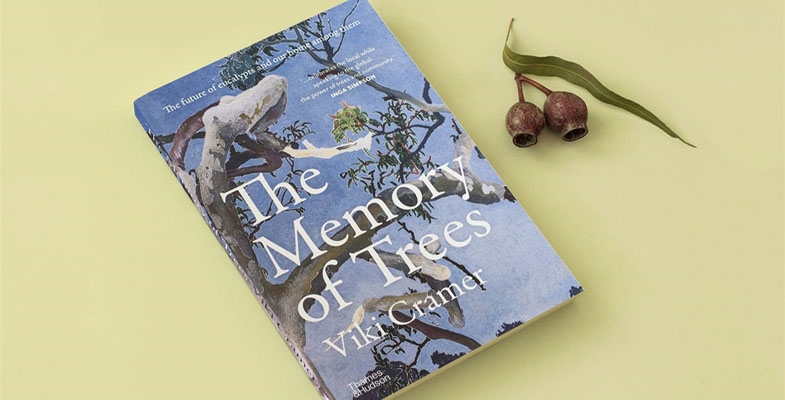This book was of great interest having lived in Perth for 9 years and worked and travelled at length in WA for more than 40 years, including in many areas covered in the book, set predominantly in the south-west and south of the state. It's written by freelance ecologist and writer Vicki Cramer, whose research and publications through institutes like Curtin University and the CSIRO span a wide range of WA ecology, from bats and marsupials to Western Australia’s management, exploitation and clearing of eucalypt forests. In 2021 she was awarded a Dahl Fellowship from the charitable organisation Eucalypt Australia. Though set almost entirely in WA, the book mirrors the natural vegetation situation in other states and the threats it faces.
The Memory of Trees is divided into long, quite detailed chapters dealing with topics such as Jarrah forests and their threats, the West Australian Wheatbelt and salinity, the amazing Great Western Woodlands with their vast areas of trees growing in climates so dry that trees really shouldn’t grow at all. And, of extreme importance for us in NSW, the subject of bushfire, of hazard reduction and cultural burns and their history and arguments for and against. Relevant to fire and overshadowing everything covered in the book of course is climate change, the biggest mover of the goalposts that we face.
How many plant species are native to the south-west of WA? Well, the book cites 8379 would you believe (but of course new species are discovered every year so that’s by no means the final figure). Of that number, 1750 are native to Fitzgerald River National Park for example, a big park of nearly 3,000 km2 flanking WA’s south coast, big yes, but that’s very, very rich! (Blue Mountains World Heritage with around 1500 species is three times as big). And then the Stirling Ranges: full of endemic species, some of them isolated to individual peaks. These are examples of the fragile communities surviving as large islands of natural vegetation flanked or surrounded by land cleared for agriculture? What species have been lost through the clearing process? We will never know the full number, plant or animal.
Stirling Ranges and Fitzgerald River are flanked by the WA Wheatbelt. Vast areas of forest and woodland were cleared through waves of settlement, and managed on a broadacre basis with no treed remnants allowed to remain that get in the way of the massive harvesters. Farms have merged over time and families have moved away, much as is happening in Europe. The ancient impoverished wheatbelt soils were boosted, and have to be regularly topped up with superphosphate and trace elements. Natural vegetation over most of the wheatbelt is restricted to corridors and fringes along boundaries and roadways, plus isolated small copses. Mass tree removal, their roots no longer pumping, led to gradual rise in salinity – covered by a chapter in the book that highlights the recovery efforts of landowners and community groups but also political sidestepping, ignorance and neglect. Governments like to bypass salinity, highlighting grain yields, but a brief Google search will tell you that the WA wheatbelt yields a ball park figure of around 2 tonnes of grain per hectare – Ukraine by comparison, in its heyday, achieved roughly double that.
The Jarrah forests, featuring Eucalyptus marginata, were a backbone to WA’s historic economy. The rich, deep red, termite resistant timber is hard to source today except through recycling, but it was used in building and construction, in termite proof railway sleepers and in flooring and furniture, and it was exported globally. But it grows on iron and alumina rich laterite terrain large areas of which have been mined for bauxite. Bauxite, a chemically extreme end member of a soil profile, is typically only a few metres thick and so vast areas have to be stripped and mined to yield a commercial tonnage. Companies however are obligated to stockpile and restore the surface material, and the author describes traverses with colleagues in areas ranging from pristine and even rare old growth forest to sites in various stages of restoration. But one comes away with the impression that nothing can truly replace the lost forests. And then of course there’s climate change pushing winter rainfall southwards, and Phytophthora dieback!
Now for the Great Western Woodlands: these are truly vast but exceptionally vulnerable, made up essentially of eucalypt species some of which recover from fire, like the numerous species of mallee, while others are obligate seeders and are incinerated. If you’ve travelled the wheatbelt and the southern goldfields you’ll be familiar with the copper-red trunks of salmon gums. If you’ve driven east of Norseman you’ll have seen fine examples of Great Western Woodland, and perhaps be stunned to learn that the seemingly healthy trees are growing in less than 300mm mean annual rainfall. The author's field descriptions in areas east of the wheatbelt town of Hyden are both illuminating and saddening: overall the vast woodlands are threatened by climate change, reduced rainfall, human activity and most especially by fire.
Later in the book the author veers towards positive aspects: the Gondwana Link and the Nowanup Cultural Community. Gondwana link, which involves Bush Heritage among other groups, acquires land to revegetate to eventually form a chain of natural vegetation from the coastal forests of the south-west 1000km to the east to join up with the Great Western Woodland. Nowanup on the other hand was established to rally behind and promote Noongar cultural elements of which include cultural burning, which is perhaps the only way to mitigate and soften the devastating effects of climate change and fire on the woodlands and forests within a realistic time frame.
Viki Cramer, Thames and Hudson, 2023, paperback, 292 pp (reviewed by John Martyn)

